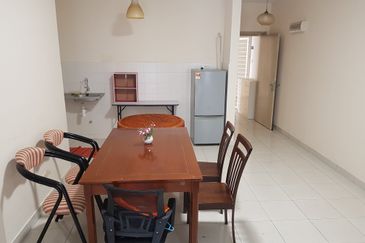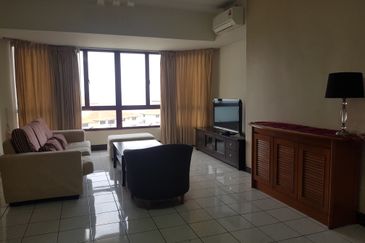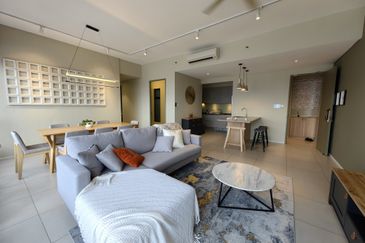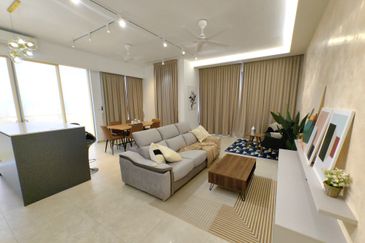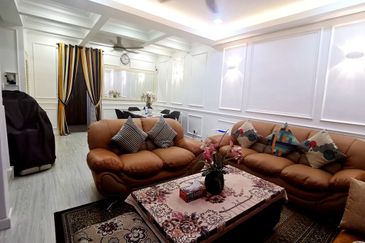HONG KONG: Almost 1,350 hectares of rural land next to or surrounded by country parks in Hong Kong — some already in the hands of developers — has no zoning protection.
It means owners can build whatever they want within the limits of the land lease.
This emerged on Monday, Aug 9 as it was learnt that rural leaders, spurred by an outcry over the defacing of a beauty spot on Sai Kung's Tai Long Wan coast, propose establishing a conservation trust to protect valuable sites.
Tai Long Sai Wan was made subject to zoning rules last Friday, but a government document seen by the South China Morning Post shows that 1,338 hectares in 53 similar pockets have no such plans.
The sites include four listed among 12 sensitive areas in 2004 under a then new nature conservation policy but still lack any zoning or proposals to protect them better.
The government earlier listed 77 such pockets of which 54 — now 53 — had no zoning protection but said it was not ready to give details.
The Heung Yee Kuk, which represents indigenous villagers, has joined forces with green groups to form a working party on ways to set up a conservation trust.
A series of meetings will be held soon on how such a trust could be organised and monitored, and how the funds could be raised and allocated, but there is no timetable for its establishment. The kuk and the green groups have been in talks for five years on how to resolve their differences on rural land preservation, but the latest move was given impetus by the row over excavation at a Sai Wan site by a businessman who bought the land for a private retreat.
Environment officials are also conducting what they say is an urgent review on how to adjust conservation policy in response to mounting calls for more protection for the pocket areas.
According to the detailed list of the distribution of these areas seen by the Post, the 77 pockets cover 13 country parks and two special areas. Many are both privately and government-owned.
After the zoning plan for Sai Wan was gazetted last Friday, 24 of the 77 are covered by statutory zoning plans.
The Sai Wan plan virtually freezes all new development in the area, which is left with two artificial ponds created by three diggers believed to have been illegally moved onto the site and which are still there pending government approval for their removal.
Of the unprotected pocket areas, the Sai Kung East and West country parks have the most — 18. They are followed by Plover Cove Country Park with 12. There are none on Hong Kong Island.
A site at Tai Ho on northern Lantau is the biggest at 277 hectares, while the Luk Wu and Keung Shan area, known for religious temples, is 155 hectares.
Pockets recently bought up by developers include Hoi Ha and Lai Chi Chong where development plans remain unclear at this stage. In To Kwa Peng, the construction of small houses has begun after Lands Department approval.
On Lantau, plots of land in Tei Tong Tsai were bought by an overseas-registered company, which is building an underground columbarium.
A closed-door meeting attended by environment minister Edward Yau Tang-wah was held last Friday with members of the Country and Marine Parks Board to discuss the issues.
Officials warn that resources constraints may slow the process of drawing up a zoning plan for the areas, and priority based on an area's accessibility and development threats has to be set out.
"If officials believe a pocket faces a real and substantial development threat, high priority should be given," a person close to the meeting said.
For areas under a lesser threat, consideration might be given to incorporating them into country parks.
Environment and conservation officials are still reluctant to use the Lands Resumption Ordinance to buy the sites with public funds, because of the cost and implications for landowners' rights.
Officials have also not made it clear whether the government would set up a conservation trust or fund to buy and maintain valuable sites.
In response to questions, Heung Yee Kuk adviser Dr Yau Wing-kwong said a working group had been formed and hailed its formation as a "concrete step forward" towards establishment of a non-governmental conservation trust.
"A non-governmental trust will be far more flexible in delivering the jobs than a government one," he said.
Yau did not rule out that the trust could be used to buy or lease sites for conservation, support rehabilitation of abandoned farmland or village revitalisation.
Green Power chief executive Man Chi-sum said the government should move as quickly as possible to plug planning loopholes in these pockets before they were threatened by developments.
"Officials should also change their mentality so that not just those facing imminent threats should be covered by plans. Places that now seem safe also deserve better protection to minimise the possibility of being destroyed," he said.
Riding on public sentiment to protect the pocket areas, Man said there had never been a better time to push for stronger planning controls on these sites, but this was a far from perfect and active tool.
"What we need is a sustainable solution such as a conservation fund that will not just buy up or lease a site, but also actively manage it," Man said. — South China Morning Post
It means owners can build whatever they want within the limits of the land lease.
This emerged on Monday, Aug 9 as it was learnt that rural leaders, spurred by an outcry over the defacing of a beauty spot on Sai Kung's Tai Long Wan coast, propose establishing a conservation trust to protect valuable sites.
Tai Long Sai Wan was made subject to zoning rules last Friday, but a government document seen by the South China Morning Post shows that 1,338 hectares in 53 similar pockets have no such plans.
The sites include four listed among 12 sensitive areas in 2004 under a then new nature conservation policy but still lack any zoning or proposals to protect them better.
The government earlier listed 77 such pockets of which 54 — now 53 — had no zoning protection but said it was not ready to give details.
The Heung Yee Kuk, which represents indigenous villagers, has joined forces with green groups to form a working party on ways to set up a conservation trust.
A series of meetings will be held soon on how such a trust could be organised and monitored, and how the funds could be raised and allocated, but there is no timetable for its establishment. The kuk and the green groups have been in talks for five years on how to resolve their differences on rural land preservation, but the latest move was given impetus by the row over excavation at a Sai Wan site by a businessman who bought the land for a private retreat.
Environment officials are also conducting what they say is an urgent review on how to adjust conservation policy in response to mounting calls for more protection for the pocket areas.
According to the detailed list of the distribution of these areas seen by the Post, the 77 pockets cover 13 country parks and two special areas. Many are both privately and government-owned.
After the zoning plan for Sai Wan was gazetted last Friday, 24 of the 77 are covered by statutory zoning plans.
The Sai Wan plan virtually freezes all new development in the area, which is left with two artificial ponds created by three diggers believed to have been illegally moved onto the site and which are still there pending government approval for their removal.
Of the unprotected pocket areas, the Sai Kung East and West country parks have the most — 18. They are followed by Plover Cove Country Park with 12. There are none on Hong Kong Island.
A site at Tai Ho on northern Lantau is the biggest at 277 hectares, while the Luk Wu and Keung Shan area, known for religious temples, is 155 hectares.
Pockets recently bought up by developers include Hoi Ha and Lai Chi Chong where development plans remain unclear at this stage. In To Kwa Peng, the construction of small houses has begun after Lands Department approval.
On Lantau, plots of land in Tei Tong Tsai were bought by an overseas-registered company, which is building an underground columbarium.
A closed-door meeting attended by environment minister Edward Yau Tang-wah was held last Friday with members of the Country and Marine Parks Board to discuss the issues.
Officials warn that resources constraints may slow the process of drawing up a zoning plan for the areas, and priority based on an area's accessibility and development threats has to be set out.
"If officials believe a pocket faces a real and substantial development threat, high priority should be given," a person close to the meeting said.
For areas under a lesser threat, consideration might be given to incorporating them into country parks.
Environment and conservation officials are still reluctant to use the Lands Resumption Ordinance to buy the sites with public funds, because of the cost and implications for landowners' rights.
Officials have also not made it clear whether the government would set up a conservation trust or fund to buy and maintain valuable sites.
In response to questions, Heung Yee Kuk adviser Dr Yau Wing-kwong said a working group had been formed and hailed its formation as a "concrete step forward" towards establishment of a non-governmental conservation trust.
"A non-governmental trust will be far more flexible in delivering the jobs than a government one," he said.
Yau did not rule out that the trust could be used to buy or lease sites for conservation, support rehabilitation of abandoned farmland or village revitalisation.
Green Power chief executive Man Chi-sum said the government should move as quickly as possible to plug planning loopholes in these pockets before they were threatened by developments.
"Officials should also change their mentality so that not just those facing imminent threats should be covered by plans. Places that now seem safe also deserve better protection to minimise the possibility of being destroyed," he said.
Riding on public sentiment to protect the pocket areas, Man said there had never been a better time to push for stronger planning controls on these sites, but this was a far from perfect and active tool.
"What we need is a sustainable solution such as a conservation fund that will not just buy up or lease a site, but also actively manage it," Man said. — South China Morning Post
SHARE
TOP PICKS BY EDGEPROP
RENT
FEATURED
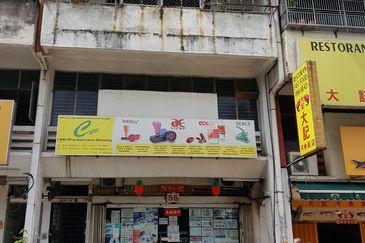
Bandar Baru Sri Petaling
Bandar Baru Sri Petaling, Kuala Lumpur
RM 3,300
- beds |
2 bath |
2000 sqft
RENT
FEATURED
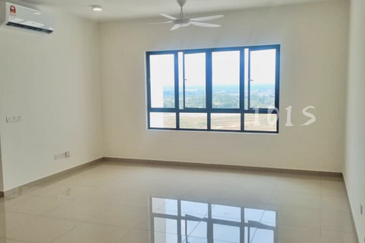
Duduk Se.Ruang @ Eco Sanctuary
Kuala Langat, Selangor
RM 1,100
1 beds |
1 bath |
570 sqft
RENT
FEATURED

Duduk Se.Ruang @ Eco Sanctuary
Kuala Langat, Selangor
RM 1,300
3 beds |
2 bath |
1000 sqft
RENT
FEATURED

Duduk Se.Ruang @ Eco Sanctuary
Kuala Langat, Selangor
RM 1,350
3 beds |
2 bath |
1000 sqft
SALE
FEATURED
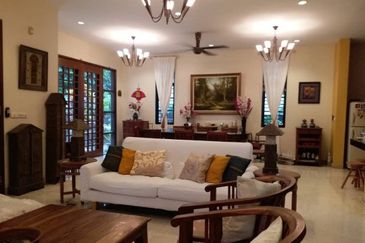
Bukit Jalil Golf & Country Resort
Bukit Jalil, Kuala Lumpur
RM 4,500,000
6 beds |
7 bath |
4500 sqft


